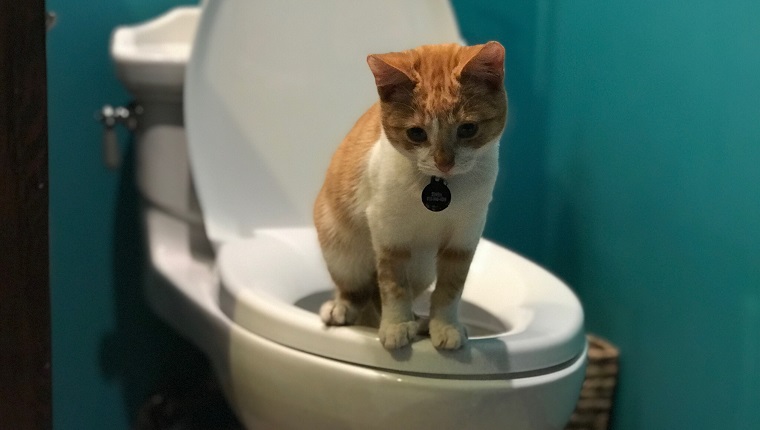Just how do you really feel in relation to How to Dispose of Cat Poop and Litter Without Plastic Bags?

Introduction
As feline owners, it's vital to bear in mind how we get rid of our feline close friends' waste. While it may appear convenient to purge pet cat poop down the commode, this practice can have destructive effects for both the environment and human health and wellness.
Alternatives to Flushing
Luckily, there are more secure and more liable ways to throw away feline poop. Consider the complying with choices:
1. Scoop and Dispose in Trash
One of the most typical technique of throwing away pet cat poop is to scoop it into a naturally degradable bag and throw it in the trash. Be sure to use a devoted clutter inside story and get rid of the waste immediately.
2. Use Biodegradable Litter
Choose naturally degradable feline litter made from products such as corn or wheat. These clutters are environmentally friendly and can be safely disposed of in the garbage.
3. Bury in the Yard
If you have a backyard, consider burying pet cat waste in a designated area far from vegetable yards and water sources. Be sure to dig deep enough to stop contamination of groundwater.
4. Mount a Pet Waste Disposal System
Invest in an animal waste disposal system particularly made for feline waste. These systems use enzymes to break down the waste, lowering odor and environmental effect.
Wellness Risks
Along with ecological concerns, purging pet cat waste can additionally pose health risks to people. Pet cat feces might contain Toxoplasma gondii, a parasite that can trigger toxoplasmosis-- a potentially severe ailment, especially for pregnant ladies and people with weakened body immune systems.
Ecological Impact
Purging cat poop presents hazardous microorganisms and parasites right into the supply of water, posing a substantial danger to water ecological communities. These impurities can negatively affect aquatic life and concession water top quality.
Final thought
Accountable animal possession extends beyond giving food and sanctuary-- it likewise involves appropriate waste administration. By refraining from flushing pet cat poop down the bathroom and going with different disposal approaches, we can decrease our environmental impact and safeguard human wellness.
Why Can’t I Flush Cat Poop?
It Spreads a Parasite
Cats are frequently infected with a parasite called toxoplasma gondii. The parasite causes an infection called toxoplasmosis. It is usually harmless to cats. The parasite only uses cat poop as a host for its eggs. Otherwise, the cat’s immune system usually keeps the infection at low enough levels to maintain its own health. But it does not stop the develop of eggs. These eggs are tiny and surprisingly tough. They may survive for a year before they begin to grow. But that’s the problem.
Our wastewater system is not designed to deal with toxoplasmosis eggs. Instead, most eggs will flush from your toilet into sewers and wastewater management plants. After the sewage is treated for many other harmful things in it, it is typically released into local rivers, lakes, or oceans. Here, the toxoplasmosis eggs can find new hosts, including starfish, crabs, otters, and many other wildlife. For many, this is a significant risk to their health. Toxoplasmosis can also end up infecting water sources that are important for agriculture, which means our deer, pigs, and sheep can get infected too.
Is There Risk to Humans?
There can be a risk to human life from flushing cat poop down the toilet. If you do so, the parasites from your cat’s poop can end up in shellfish, game animals, or livestock. If this meat is then served raw or undercooked, the people who eat it can get sick.
In fact, according to the CDC, 40 million people in the United States are infected with toxoplasma gondii. They get it from exposure to infected seafood, or from some kind of cat poop contamination, like drinking from a stream that is contaminated or touching anything that has come into contact with cat poop. That includes just cleaning a cat litter box.
Most people who get infected with these parasites will not develop any symptoms. However, for pregnant women or for those with compromised immune systems, the parasite can cause severe health problems.
How to Handle Cat Poop
The best way to handle cat poop is actually to clean the box more often. The eggs that the parasite sheds will not become active until one to five days after the cat poops. That means that if you clean daily, you’re much less likely to come into direct contact with infectious eggs.
That said, always dispose of cat poop in the garbage and not down the toilet. Wash your hands before and after you clean the litter box, and bring the bag of poop right outside to your garbage bins.
https://trenchlesssolutionsusa.com/why-cant-i-flush-cat-poop/

As an enthusiastic reader on Don’t flush cat feces down the toilet, I assumed sharing that blog post was a good thing. Appreciated our review? Please share it. Let other people discover it. Thank you so much for going through it.
Estimate Free
Comments on “Dangers of Disposing Cat Poop in Your Toilet - Precautionary Steps”